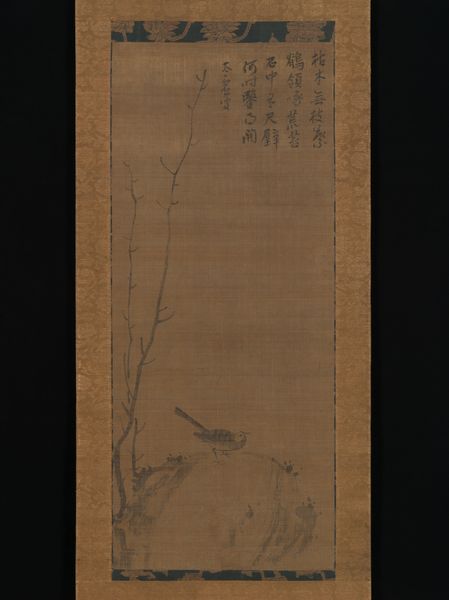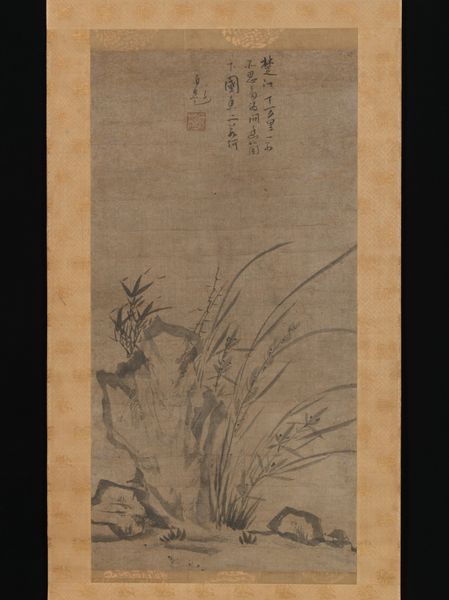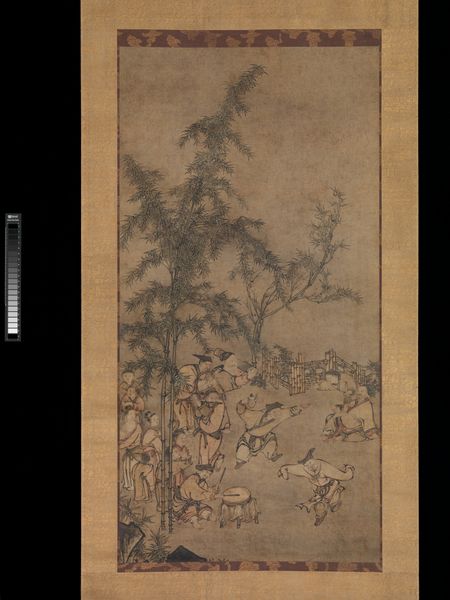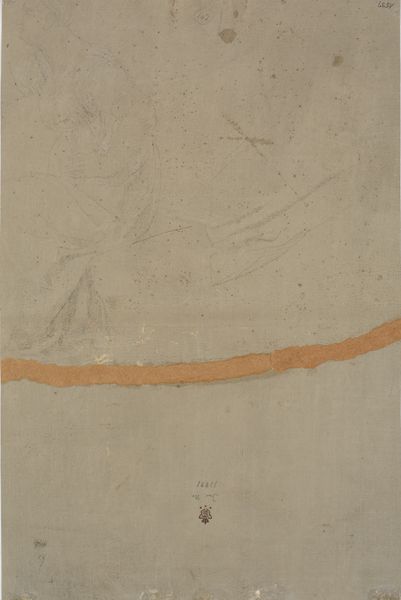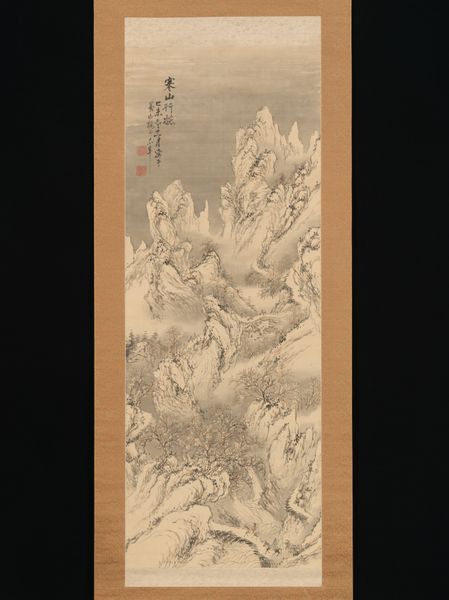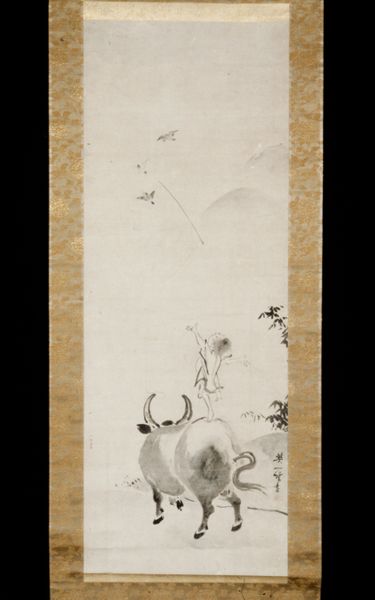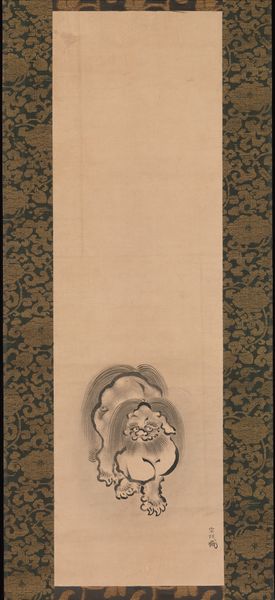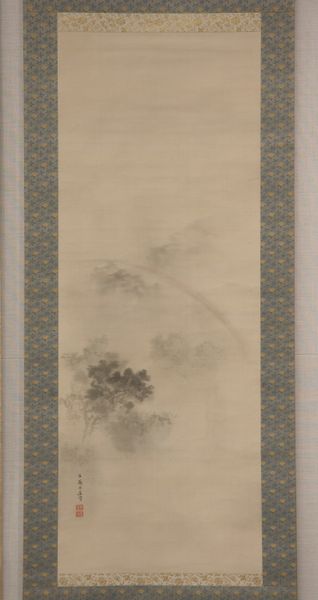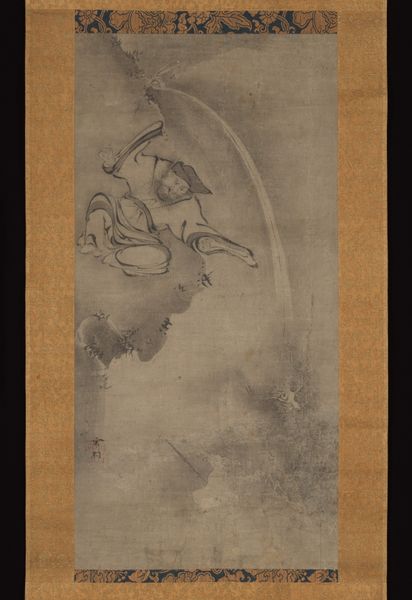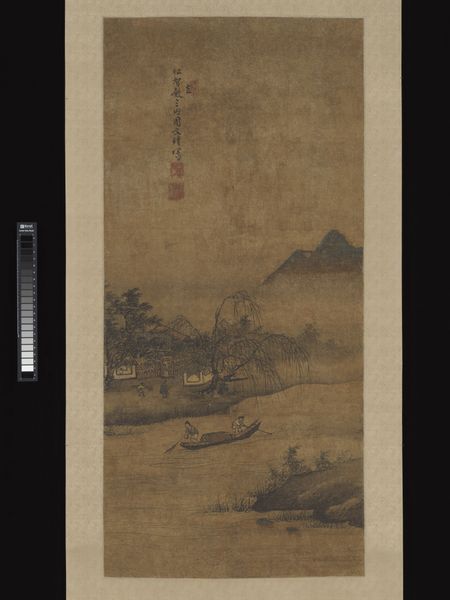
drawing, ink
#
drawing
#
asian-art
#
landscape
#
ink
#
23_muromachi-period-1392-1573
Dimensions: Image: 31 1/2 × 13 3/8 in. (80 × 33.9 cm) Overall with mounting: 59 13/16 × 14 3/16 in. (152 × 36 cm) Overall with knobs: 59 13/16 × 16 1/16 in. (152 × 40.8 cm)
Copyright: Public Domain
Bokushō Shūshō painted this splashed-ink landscape scroll in Japan, sometime between 1450 and 1600. Shūshō was a Zen Buddhist priest, and his ink paintings often reflect the ideals of Zen practice. The splashed-ink technique suggests a spontaneity and freedom of expression, very different from the highly controlled brushwork often associated with traditional landscape painting. The monochrome palette further emphasizes the spiritual and meditative aspects of the work. But there is also a radical individualism at play here. Zen monks occupied a complicated position in Japanese society, often acting as both spiritual leaders and outsiders. We can see this tension in the painting itself, as the traditional landscape elements of mountains, trees, and water are rendered in a non-traditional way. The emotional impact lies in this balance between chaos and control, freedom and constraint. How might Shūshō's identity have been shaped by these forces?
Comments
No comments
Be the first to comment and join the conversation on the ultimate creative platform.

